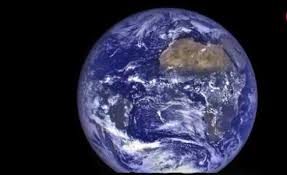Oxygen and Life: Till now it was believed that oxygen played an important role in the beginning of complex life on Earth. Some 540 million years ago, the amount of oxygen in the atmosphere increased very rapidly. This promoted the Cambrian explosion, which brought life to the Earth’s biosphere. Extremely complex animal species came into existence.
Now a new research shows that oxygen was not spread in the atmosphere and oceans then. A large amount of oxygen slowly dissolved in shallow basins and oceanic shelves. However, this does not mean that oxygen had no role in the Cambrian explosion.

‘Cambrian animals did not need that much oxygen’
Eric Sperling, a geobiologist at Stanford University, is the lead author of this study. He said, ‘Cambrian animals probably did not need as much oxygen as scientists believed.’ He said that we found a slight increase in oxygen in sedimentary rocks formed at the bottom of ancient oceans – which is of the right magnitude to induce major changes in ecology.
Scientists argue that without sufficient oxygen, unicellular organisms and other small organisms that lived before the Cambrian explosion would not have been able to grow larger or expand their physical structure. But all the evidence from around the world is contradictory. This raises the question of how much oxygen was needed.

There was enough oxygen in shallow water for marine life
According to the study, oxygen levels in the deep sea did not reach modern levels until the Devonian period, 140 million years after the Cambrian explosion. However, wind and waves would have increased the oxygen level in shallow water so much that all types of marine life could emerge. The team’s research builds on a 2017 study that found that shallow seas became oxygenated first, but atmospheric oxygen reached modern levels during the subsequent Ordovician period, about 50–100 million years after the Cambrian explosion.




